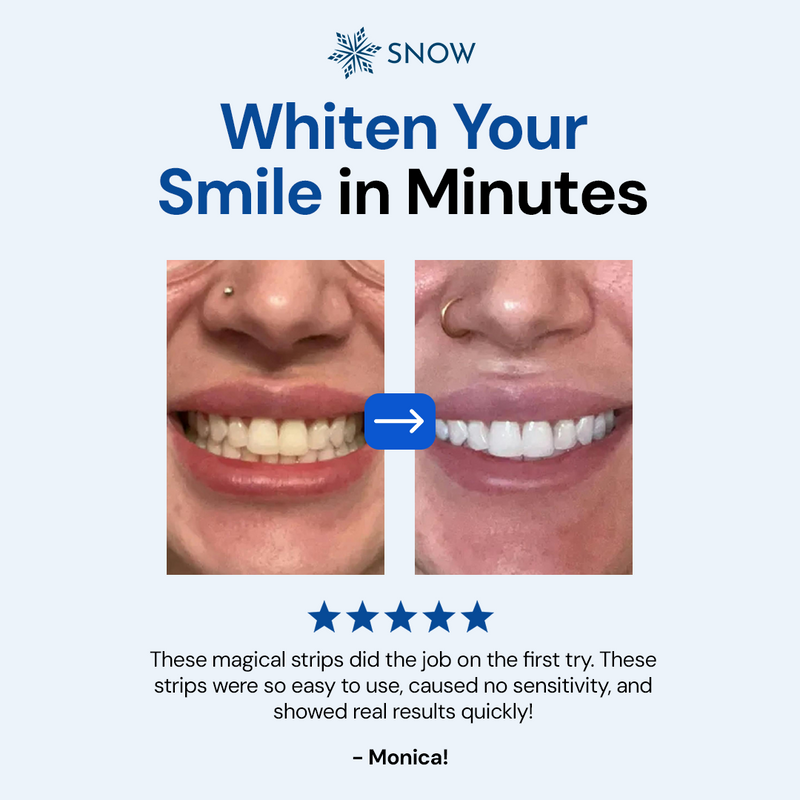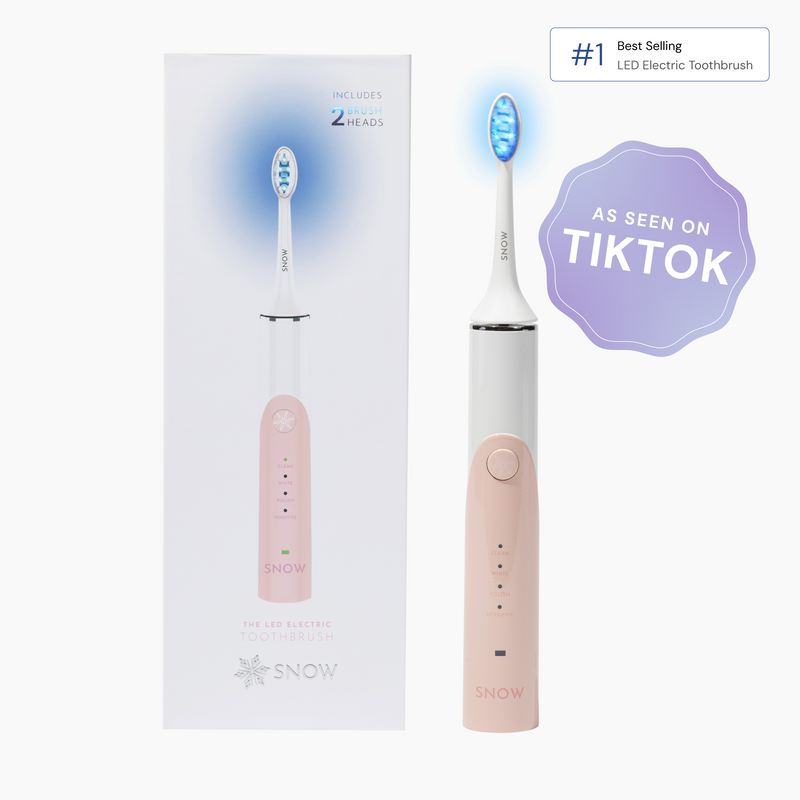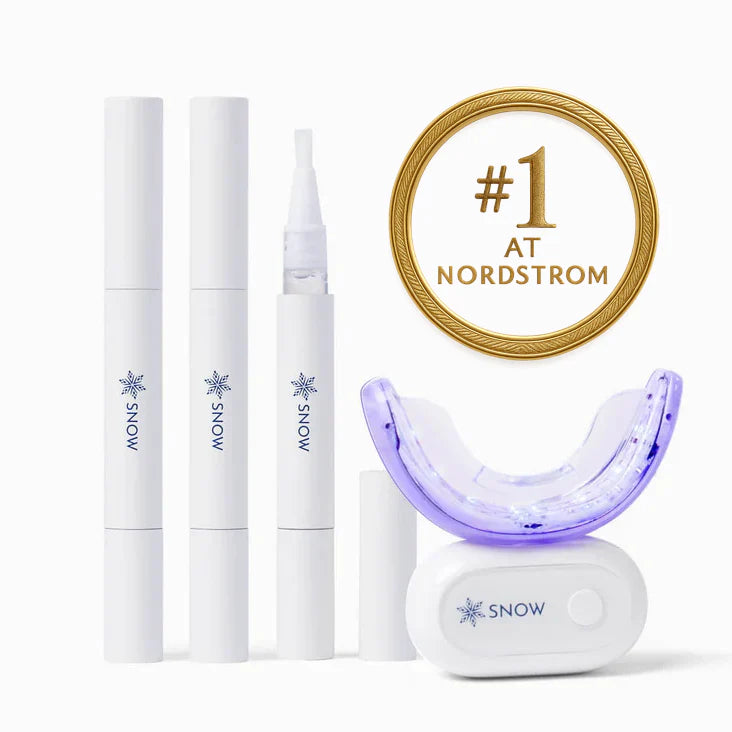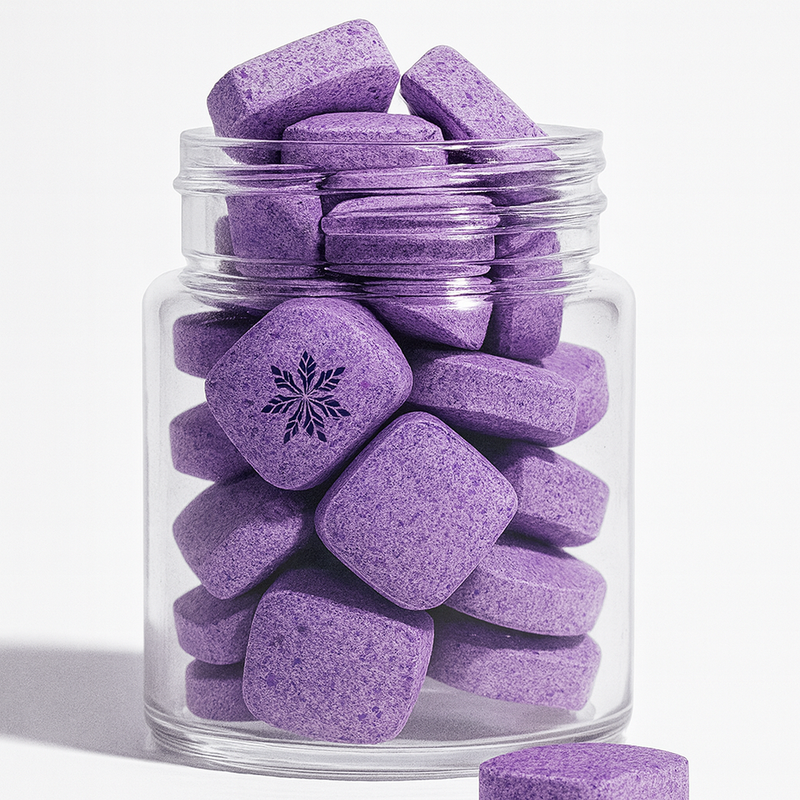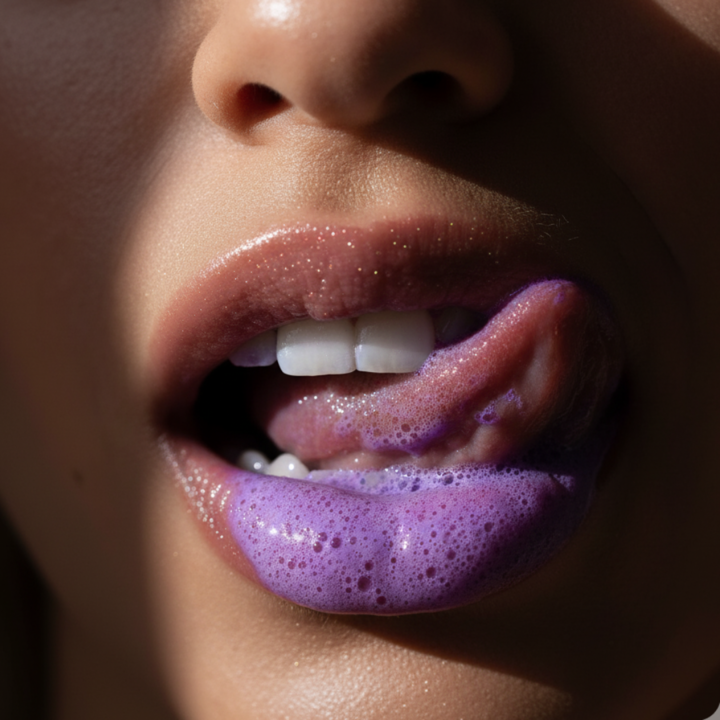The fastest way to remove tobacco stains is with professional, in-office power bleaching, which can lighten teeth in a single 60-90 minute visit. At-home remedies and over-the-counter products can also be effective, but work more slowly.
Tobacco use not only causes stubborn smoking stains and yellowing but also increases the risk of gum disease. In fact, nearly 4 in 10 U.S. adults over 30 show signs of periodontitis. The risk is even higher among smokers and older adults.
This guide will walk you through the most effective ways to remove smoking stains, including in-office whitening, whitening toothpaste, and safe DIY solutions. Whether you're dealing with recent discoloration or years of nicotine buildup, you’ll find options to restore a cleaner, brighter smile.
Key Takeaways
-
Professional teeth whitening treatments, like in-office power bleaching and take-home kits, are the most effective methods for quickly removing tobacco stains from teeth.
-
At-home remedies such as baking soda paste and hydrogen peroxide rinses can effectively lighten tobacco stains, but should be used in moderation to avoid enamel damage.
-
Long-term solutions for preventing tobacco stains include regular dental cleanings, maintaining good oral hygiene, and quitting smoking altogether.
What Are the Fastest Ways to Remove Tobacco Stains?
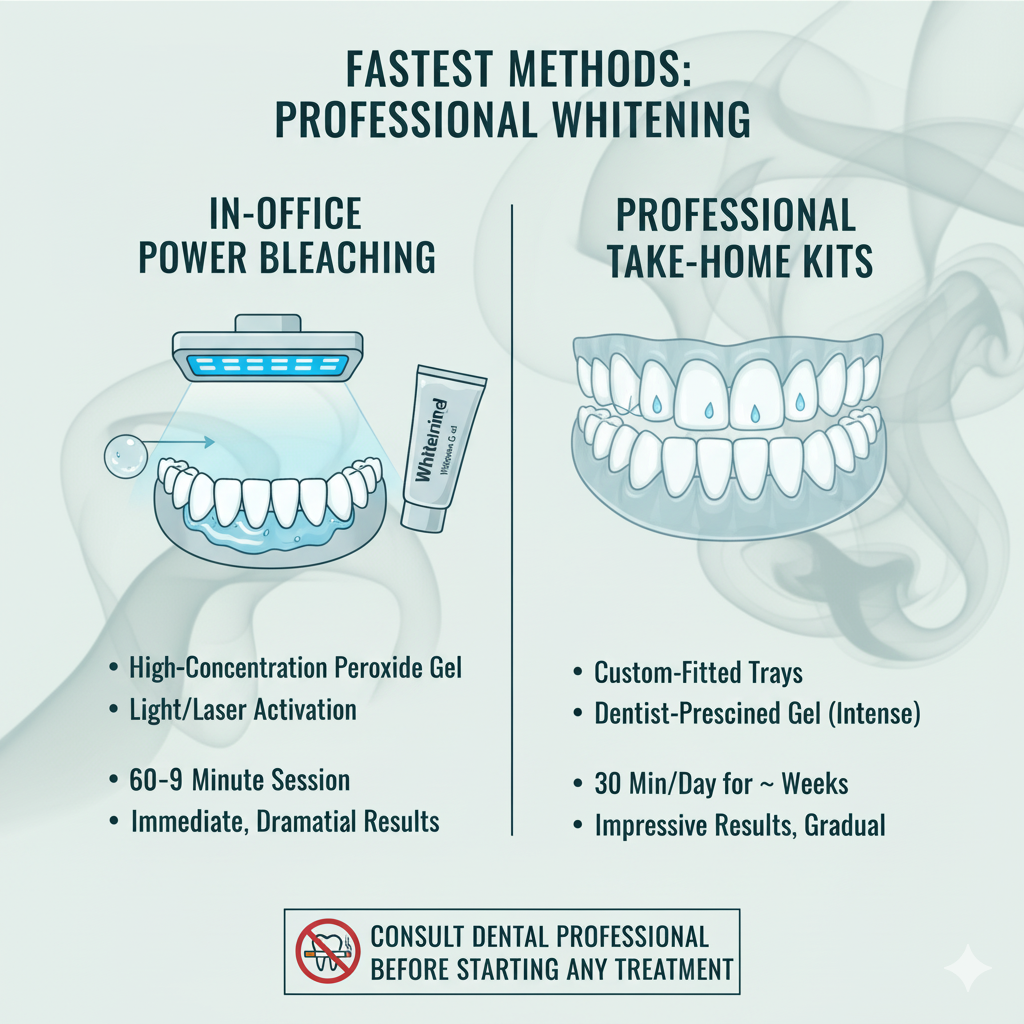
If you're wondering how to remove tobacco stains from teeth quickly, professional whitening treatments remain the most effective choice. These methods are specifically designed to target deep nicotine stains and restore a visibly whiter smile in less time than most home remedies. Two options stand out: in-office power bleaching and professional take-home whitening kits. Both rely on dentist-grade whitening gel to break down stains on tooth enamel, particularly those caused by smoking or chewing tobacco.
Before beginning any teeth whitening treatment, speak with a dental professional. They can assess your oral health and recommend a safe, practical approach tailored to your needs.
In-Office Power Bleaching
In-office power bleaching is one of the fastest ways to remove smoking stains. The treatment involves:
-
Applying a high-concentration peroxide-based whitening gel to the teeth
-
Using a laser or light to activate the gel, which allows it to penetrate the enamel and lift stains
-
Completing the entire process in a single session that typically lasts 60 to 90 minutes
This approach offers immediate results, making it ideal for patients seeking noticeable improvement in a single visit. It's beneficial for those dealing with deep stains from tobacco products or long-term smoking.
If you're looking for a professional-grade at-home whitening solution, consider SNOW's LED Teeth Whitening Kit. It uses a peroxide-based whitening gel activated by LED light, giving you a similar brightening effect over multiple applications.
Shop the SNOW LED Whitening Kit
Professional Take-Home Whitening Kits
Take-home kits from your dentist are another powerful solution for removing tobacco stains. These kits include:
-
Custom-fitted trays that ensure even distribution of whitening gel
-
Dentist-prescribed whitening gel with a safe yet intense peroxide concentration
-
A daily application schedule, usually around 30 minutes per day for two weeks
These kits are especially effective for tackling nicotine stains and discoloration that over-the-counter products cannot fully address. Although they take longer than in-office treatments, the results can be just as impressive when used consistently.
For a trusted at-home option, SNOW’s Magic Whitening Strips deliver results similar to those of professional treatments. They're designed to safely remove tobacco stains from your teeth without causing tooth sensitivity or damaging enamel.
Try SNOW Magic Whitening Strips
What At-Home Remedies Can Remove Tobacco Stains?

If you're wondering how to remove tobacco stains from your teeth quickly, home remedies offer a simple and affordable option. While professional treatments deliver faster and longer-lasting results, natural solutions like baking soda and hydrogen peroxide can help reduce surface stains from tobacco products and support your daily oral hygiene.
Smoking and chewing tobacco are leading causes of yellow and brown stains on teeth. These stains build up as nicotine, tar, and tobacco leaves attach to your enamel. If ignored, they can contribute to tartar buildup, gum disease, bad breath, and long-term damage to your dental health.
At-home solutions are ideal for managing mild to moderate stains between dental visits. They are also helpful for people trying to stop smoking or reduce the effects of smoking on their smile.
Baking Soda Paste
Baking soda works as a mild abrasive that can help lift surface stains from your teeth without harming tooth enamel. To create a safe and effective paste:
-
Combine one teaspoon of baking soda with a few drops of hydrogen peroxide
-
Mix until a thick paste forms
-
Brush the paste gently onto stained areas
-
Let it sit for one to two minutes
-
Rinse thoroughly with water
This method can be used once or twice a week. Overuse may lead to enamel erosion, so use it in moderation and alongside your regular brushing routine. Baking soda may help reduce stains from your teeth while also supporting a healthy smile.
Hydrogen Peroxide Rinse
Using a hydrogen peroxide rinse is another effective way to reduce stains from your teeth. It can help lighten brown stains and support a healthy smile when added to your regular brushing routine.
How to use it:
-
Mix equal parts 3% hydrogen peroxide and water to create a gentle rinse.
-
Swish the solution around your mouth for about one minute.
-
Spit it out and rinse your mouth thoroughly with plain water.
Hydrogen peroxide works by breaking down protein compounds and stain molecules left by tobacco products. It also helps kill bacteria, supporting your oral hygiene and reducing risks of tartar buildup and bad breath. When used correctly, it can contribute to a brighter, cleaner smile without damaging your tooth enamel.
A 2017 review published in the Dental Clinics of North America found that low concentrations of hydrogen peroxide (typically 1.5% to 3%) are effective at removing extrinsic stains when used consistently, making it a practical option for at-home whitening.
To maintain results, pair this rinse with regular brushing, flossing, and proper dental care. For those looking to stop smoking and reverse the effects of tobacco use, this rinse can complement a broader whitening routine that supports long-term oral health.
Pair Home Remedies with Consistent Habits
While these home remedies help remove tobacco stains from your teeth, they are most effective when used in combination with proper oral hygiene. This includes:
-
Regular brushing with fluoride toothpaste
-
Flossing to remove plaque and food particles
-
Dental cleanings every six months
-
Avoiding staining foods and tobacco products
Quitting smoking is the most effective way to prevent future stains and protect your teeth from further damage. These simple steps support a healthier immune system, prevent premature aging, and reduce your risk of oral health issues.
What Daily Habits Help Prevent Tobacco Stains?
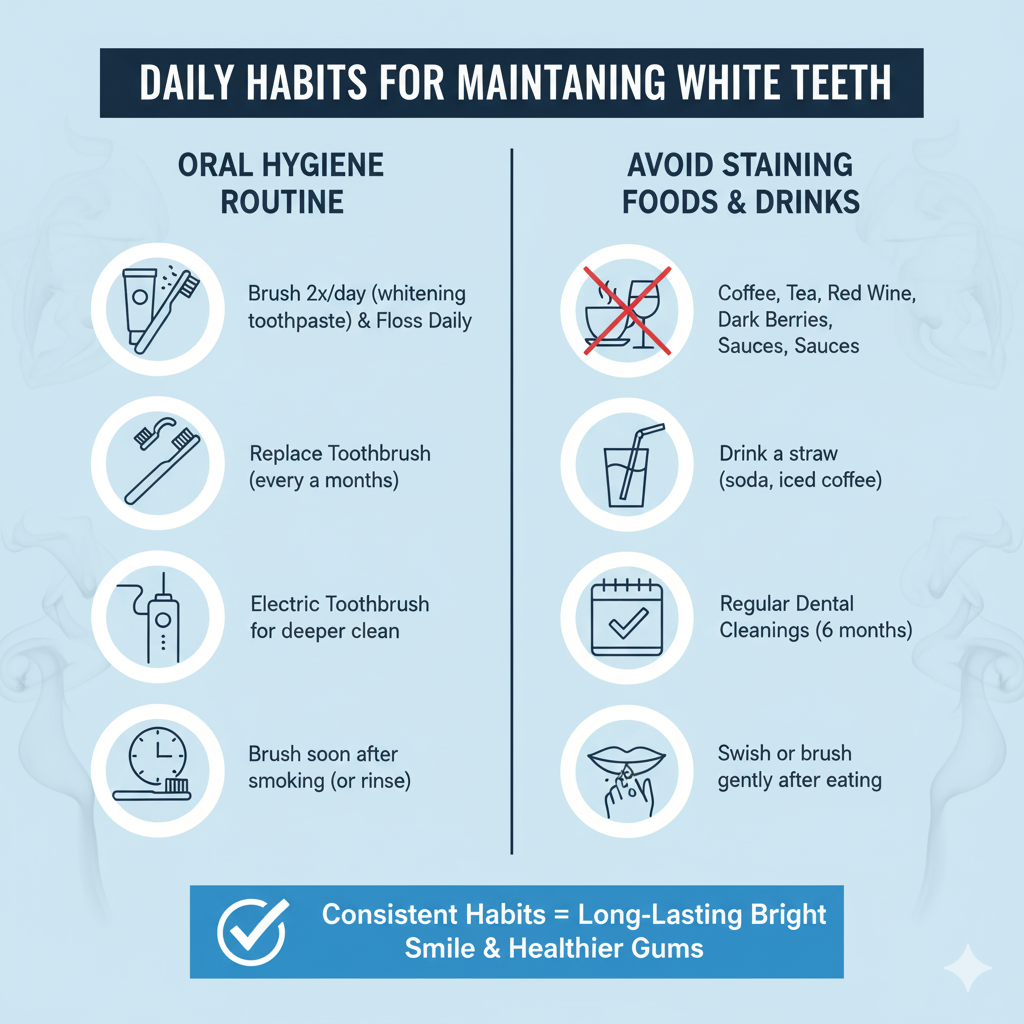
A consistently white smile is not just about professional treatments or quick fixes. It starts with the daily habits that support your oral health and prevent stains from coming back. If you've removed tobacco stains or are simply looking to maintain a healthy smile, adopting the right routine is essential for long-lasting results.
1. Prioritize Proper Oral Hygiene
Good oral hygiene is the cornerstone of keeping your teeth white and preventing new stains. Without it, surface discoloration and deeper stains can build up over time, especially for those who smoke or consume staining foods.
Here’s what an intense daily routine should include:
-
Brush at least twice a day using a whitening toothpaste with stain-lifting ingredients. Look for formulations that are non-abrasive yet effective, such as SNOW’s Whitening Toothpaste, which gently polishes enamel while helping protect against future stains.
-
Floss daily to remove food particles and plaque from between teeth, where brushing often misses. This also helps reduce tartar buildup that can darken the gumline.
-
Use a whitening mouthwash to rinse away residual plaque and discoloration-causing compounds. It also freshens breath and supports gum health.
-
Replace your toothbrush every three months or sooner if the bristles are frayed. An electric toothbrush, like SNOW's LED Electric Toothbrush, can provide a deeper clean and help maintain whitening results over time.
-
Brush soon after smoking to help reduce the immediate impact of tar and tobacco residue. If brushing isn’t possible, rinse your mouth with water to lessen the exposure.
These daily steps not only help keep your teeth clean and bright but also reduce your risk of cavities, gum disease, and bad breath.
2. Avoid or Limit Staining Foods and Beverages
Your diet plays a significant role in the color of your teeth. Certain foods and drinks contain pigments that bind to enamel, causing discoloration over time.
Every day stain-causing items include:
-
Coffee and black tea
-
Red wine
-
Dark berries (like blueberries and blackberries)
-
Soda and artificially colored sports drinks
-
Tomato-based sauces
-
Soy sauce and balsamic vinegar
To reduce the risk of new stains:
-
Drink water during and after meals to wash away staining agents.
-
Use a straw when drinking sodas or iced coffee to limit contact with your teeth.
-
Swish water or brush gently after eating to clear staining particles from enamel.
-
Substitute with lower-stain options like white tea, herbal infusions, or milk.
Maintaining this awareness around your food and drink choices can extend the results of any whitening method you use.
3. Schedule Regular Dental Cleanings
While daily home care is vital, professional dental cleanings are equally important. Your dental hygienist can remove plaque, tartar, and surface stains more thoroughly than brushing and flossing alone.
Dentists typically recommend cleanings every six months, though more frequent visits may be advised for smokers or those with a history of gum disease. These cleanings help prevent deep-set stains and improve the health of your gums and enamel.
To maintain your whitening progress between visits, SNOW offers Whitening Wands designed for targeted touch-ups and stain prevention, which can be used safely at home.
Do Over-the-Counter Whitening Products Work on Tobacco Stains?
For those looking for convenient and accessible ways to remove tobacco stains without visiting a dentist, over-the-counter whitening products offer practical solutions. While these options may not deliver the same results as professional teeth whitening treatments, they can help reduce mild to moderate stains caused by smoking or chewing tobacco when used consistently and correctly.
Common Over-the-Counter Whitening Options
Some of the most widely used options include:
-
Whitening gels
-
Mouthwashes containing hydrogen peroxide
Each product is designed to target surface-level discoloration on tooth enamel. Results vary based on the severity of the stains and the individual's oral health. Always follow product directions and consult a dental professional if you have sensitive teeth or underlying issues.
Whitening Toothpaste
Whitening toothpaste is specially formulated to remove stains from tobacco and other discoloring substances. These products often include mild abrasives and active agents like hydrogen peroxide or baking soda that help polish the enamel and gradually brighten teeth.
Key benefits:
-
Easy to add to your daily brushing routine
-
Gradually lifts stains without harsh chemicals
-
Helps maintain whitening results over time
Avoid smoker’s toothpaste with high abrasiveness, as it can wear down enamel. Choose safe, dentist-approved formulas like SNOW Whitening Toothpaste, which combines gentle brightening agents with fluoride to protect your smile.
Whitening Strips
Whitening strips are flexible plastic strips coated with whitening gel. When applied to the teeth, they deliver a concentrated dose of peroxide-based ingredients to break down discoloration from tobacco products.
Benefits include:
-
Noticeable brightening within days of consistent use
-
Convenient for home use
-
Targets surface-level brown stains and nicotine discoloration
However, whitening strips may not reach between teeth or along the gumline. Overuse can also lead to sensitivity or uneven results.
What to Keep in Mind
While over-the-counter whitening products offer flexibility, they have limitations:
-
Best for mild stains on the outer enamel
-
May require weeks of regular use to see results
-
Less effective on deep or long-term discoloration
To boost effectiveness, combine them with proper brushing, flossing, and regular dental cleanings. These products also work well for maintaining results after professional treatments or home remedies.
What Daily Habits Help Prevent Tobacco Stains?
Adopting effective preventive treatments and habits can help maintain the brightness of your teeth and prevent long-term tobacco and other staining. Regular dental cleanings and quitting smoking are two key strategies that can significantly improve your oral health and reduce the appearance of stained teeth.
Limiting contact with staining foods and beverages and using mouthwash regularly can further reduce the risk of new stains forming. Let’s explore these long-term solutions in more detail.
Regular Dental Cleanings
Routine dental cleaning is crucial for maintaining oral health by preventing the buildup of plaque and tartar. These cleanings help eliminate stains and other dental issues, ensuring a healthy and bright smile. Regular brushing is typically recommended, and visiting the dentist for cleanings every six months is recommended to keep your teeth in optimal condition.
The cost of routine dental cleanings can vary, but the investment is worthwhile for the long-term health and appearance of your teeth. Regular cleanings, combined with good oral hygiene, help maintain the results of whitening treatments and prevent future tobacco stains.
Quitting Smoking
Quitting smoking is the most effective long-term solution for preventing new tobacco stains and maintaining oral health. Tobacco use not only stains your teeth but also increases the risk of gum disease and other oral health issues. Quitting smoking significantly lowers these risks and improves the overall health of your teeth and gums.
The benefits of quitting smoking extend beyond oral health. It can also lead to improved overall health, a stronger immune system, and a brighter smile, boosting your confidence. If you want to stop smoking, these benefits can motivate you to make a positive change.
What Are the Risks of Whitening Smokers' Teeth?
The two primary risks of whitening smokers' teeth are increased tooth sensitivity and enamel damage. Excessive use of whitening products, particularly abrasive "smoker's toothpastes," can erode enamel, while the peroxide in bleaching gels can irritate the tooth's nerve, causing temporary sensitivity. This is why it is critical to consult a dental professional, who can assess your enamel health and recommend the safest, most effective treatment.
To minimize these risks, follow the recommended usage guidelines and consult a dental professional before starting any whitening treatment. Let’s discuss the specific risks associated with enamel damage and the importance of professional consultation.
Enamel Damage
Using abrasive whitening products can cause enamel erosion and increase the risk of gum damage. Enamel erosion can increase the risk of dental problems, including sensitivity and cavities, making it essential to choose whitening products that are gentle on your teeth.
To protect your enamel, avoid highly abrasive whitening agents and opt for products designed for long-term use. Consulting with a dental professional can help you select the best products for your needs and ensure the health of your teeth and gums.
Consult a Dental Professional
Consulting a dental professional before starting any teeth whitening program is crucial to ensure the treatment's safety and effectiveness. A dentist can provide personalized recommendations and suggest appropriate whitening options that will yield the best results.
Starting a whitening regimen without professional advice could lead to ineffective results or tooth damage. By seeking professional guidance, you can achieve a brighter smile while maintaining the health of your teeth and gums.
Final Thoughts
Tobacco stains can be stubborn, but there are several proven ways to reduce or remove them effectively. From in-office power bleaching and custom whitening kits to simple home remedies like baking soda paste and hydrogen peroxide rinses, you have options that match different needs and budgets. Over-the-counter solutions such as whitening toothpaste and strips offer convenience, while daily habits like proper oral hygiene and mindful eating habits help preserve long-term results.
For the most lasting impact, quitting smoking and scheduling regular dental cleanings are essential steps toward a brighter, healthier smile.
If you're looking for safe, dentist-formulated whitening solutions that fit your lifestyle, SNOW offers a range of professional-grade products you can use at home. Whether it's whitening toothpaste, LED kits, or Magic Whitening Strips, SNOW makes it easier to care for your smile, without harsh ingredients or costly appointments.
Discover SNOW’s advanced oral care tools
Frequently Asked Questions
Quick answers to help you remove tobacco stains and keep your smile bright.
What is the fastest way to remove tobacco stains from teeth?
The fastest way to remove tobacco stains from teeth is through in-office power bleaching, which can significantly lighten teeth in just 60 to 90 minutes. This method delivers quick, effective results for a brighter smile.
Are over-the-counter whitening products effective for tobacco stains?
Over-the-counter whitening products can effectively reduce mild to moderate tobacco stains, though they may not deliver results as dramatic as professional treatments. Always follow instructions and consult a dentist for the best outcomes.
How does quitting smoking affect the appearance of my teeth?
Quitting smoking leads to a brighter and healthier smile by preventing new tobacco stains and reducing the risk of gum disease. This positive change enhances your overall oral health and appearance.
What are the risks of using whitening products excessively?
Using whitening products excessively can lead to heightened tooth sensitivity and enamel damage, increasing vulnerability to stains and other dental issues. It’s essential to use these products judiciously to protect your oral health.
What daily habits can help maintain white teeth after whitening treatments?
To maintain white teeth after whitening treatments, prioritize good oral hygiene: brush twice daily with whitening toothpaste, floss, and use mouthwash. Additionally, avoid staining foods and beverages, and maintain regular dental cleanings for optimal results.




















































